What is a F1B Goldendoodle? Comparing F1 vs F1B Goldendoodles
The world of hybrid Oodle dogs (like the Goldendoodle) has some confusing language. On top of the exciting breed name mashups, different colors, coat types, and generations of Goldendoodles have different names.
Many Goldendoodle breeders and even Poodle rescues will describe the puppy using the combo “F1” or “F1B”. So what is a F1B Goldendoodle?
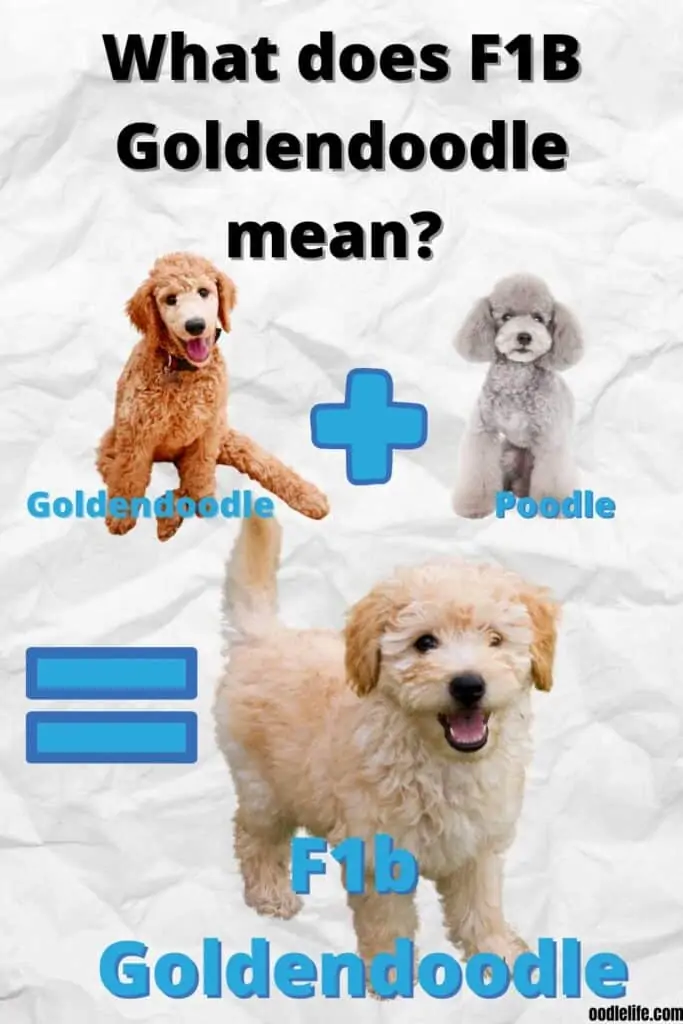
The reasons that people choose Goldendoodles so frequently are their non-shedding nature and health. Different generations do have differences in the hypoallergenic coat, coat type, and overall health.
So this means there are significant differences between many F1 and F1b Goldendoodles.
What is an F1 Goldendoodle?
F1 is shorthand for first-generation or the initial cross between two purebreds. F1 doodle dogs are common, both intentionally or accidentally.
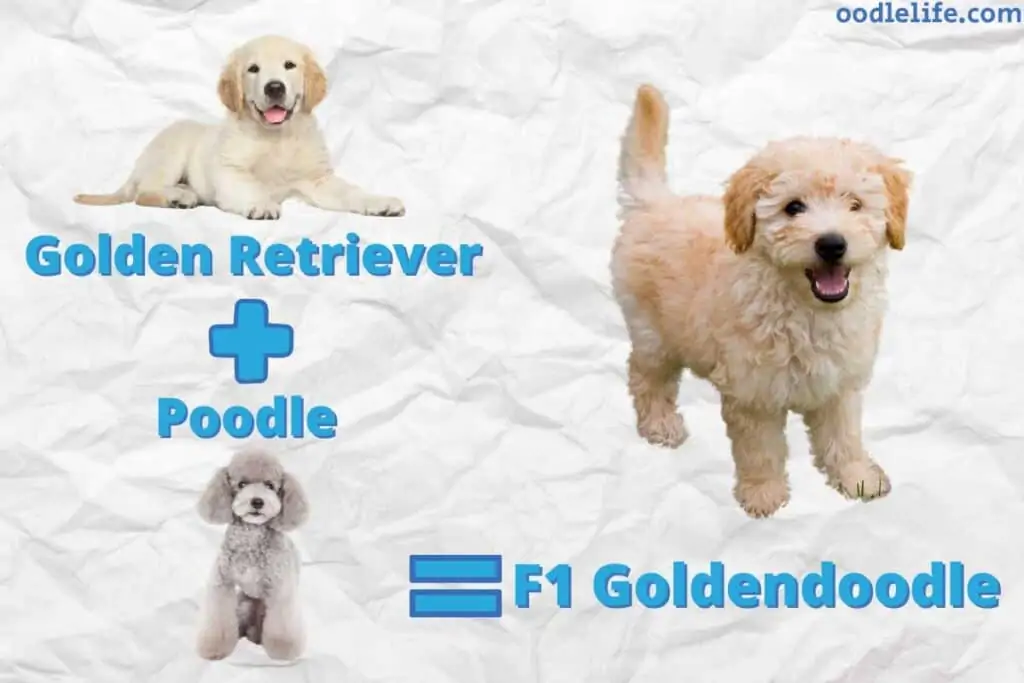
An F1 Goldendoodle indicates that the crossbreed dog is the first generation litter of a purebred Golden retriever and a Poodle.
A F1 Goldendoodle will be 50% purebred Poodle and 50% Golden Retriever.
Whenever a hybrid dog is described as F(anything), this is because they are a crossbreed. Purebred dogs are not described as F-anything. Interestingly enough, many dog breeds we consider “purebred” were not around a few hundreds of years ago.
F1 Goldendoodle Characteristics
Because an F1 Goldendoodle is 50% Poodle and 50% Golden Retriever, they have specific characteristics. Although they are genetically 50% of each breed, the featured characteristics can be from either breed.
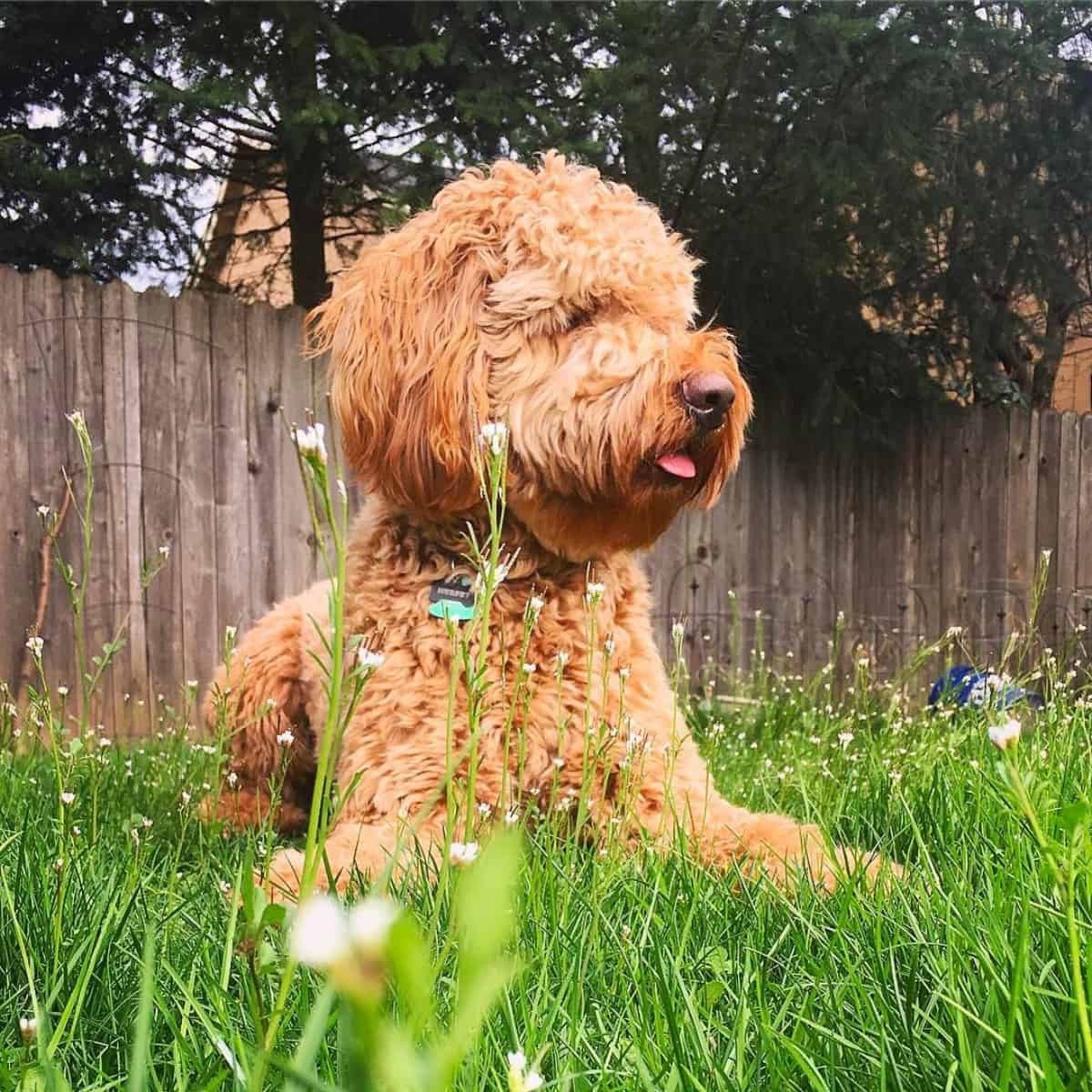
An F1 Goldendoodle can be more Poodle-like, have a non-shedding coat, or be more like a Golden Retriever and shed.
This means you can get any of the traits from either parent expressed. Other generations that are more Poodle will have more Poodle traits. Other generations that are more Golden Retriever will have more GR traits.
An F1 Goldendoodle that is more Poodle-like has a higher chance of a non-shedding coat and a teddy-bear appearance. An F1 Goldendoodle that is more like a Golden Retriever will have the zany Goldendoodle energy but be more likely to shed.
F1 Goldendoodle traits
- Coat type – anywhere from straight (shedding) right through to wavy or curly
- Non-shedding – depends on coat type. It can be anywhere from full shedding (straight) to zero shedding. Look to other generations like F1b for more peace of mind
- Health benefits of crossbreeding – yes!
- Personality – varies wildly but expect intelligence, trainability, and friendliness
What is an F1B Goldendoodle?
I often get asked what an F1b Goldendoodle and why they are in such hot demand. An F1b Goldendoodle is the 2nd generation of crossbreeding between a golden retriever and a poodle.
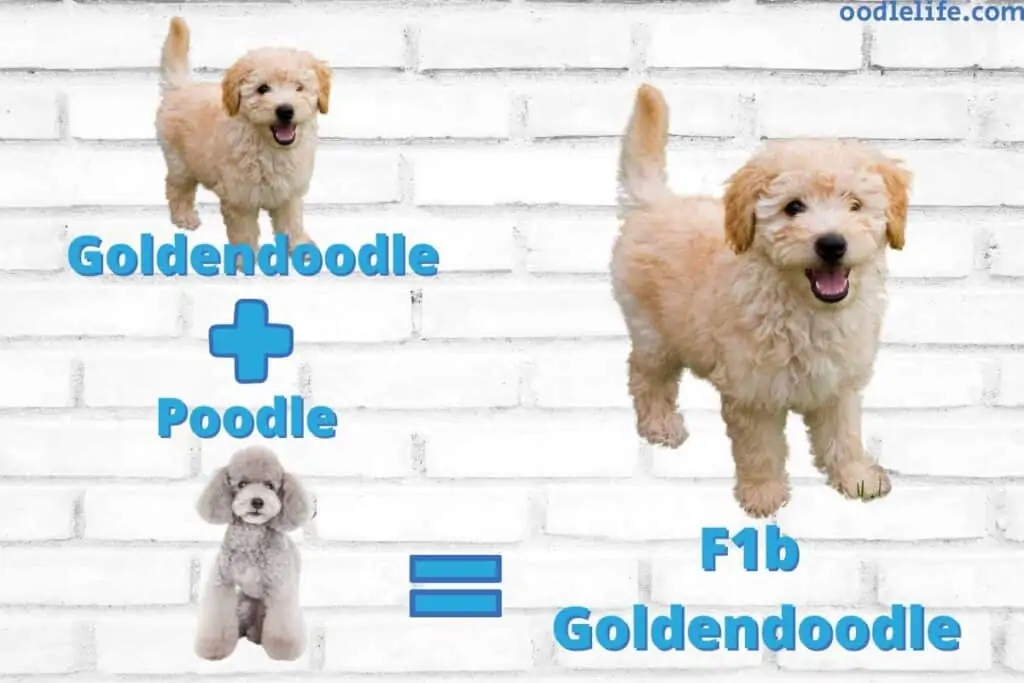
The B stands for back cross, which means that an F1 (50:50) Goldendoodle has been crossed with one of the purebred parents. This results in a F1B Goldendoodle that is teddy-bear like, non-shedding, and 75% Poodle 25% Golden Retriever.
The nomenclature F1B (or F1b) for Goldendoodle will almost always mean a Poodle back cross. It technically can mean a Golden Retriever back cross (75% Golden Retriever), but the breeder or rescue will clearly state this.
Why this is so: Goldendoodles are popular for many reasons – but mainly for their non-shedding qualities. These are inherited from the Poodle parent. So almost exclusively, any intentionally bred F1B Goldendoodle will be a Poodle back cross.
F1b Goldendoodle Traits
- That perfect PoodleXGolden Retriever personality
- Typically, a wavy or curly coat
- Non-shedding
- More likely to have a Teddy bear appearance
- Approaching hypoallergenic
- The health benefits of crossbreeding (hybrid vigor)
What sheds less F1 or F1b Goldendoodles?
If you are looking for a dog that does not shed, you want to find a dog with more Poodle genes. However, if you’re looking for something with personality and energy, look for one who has Golden Retriever genes.
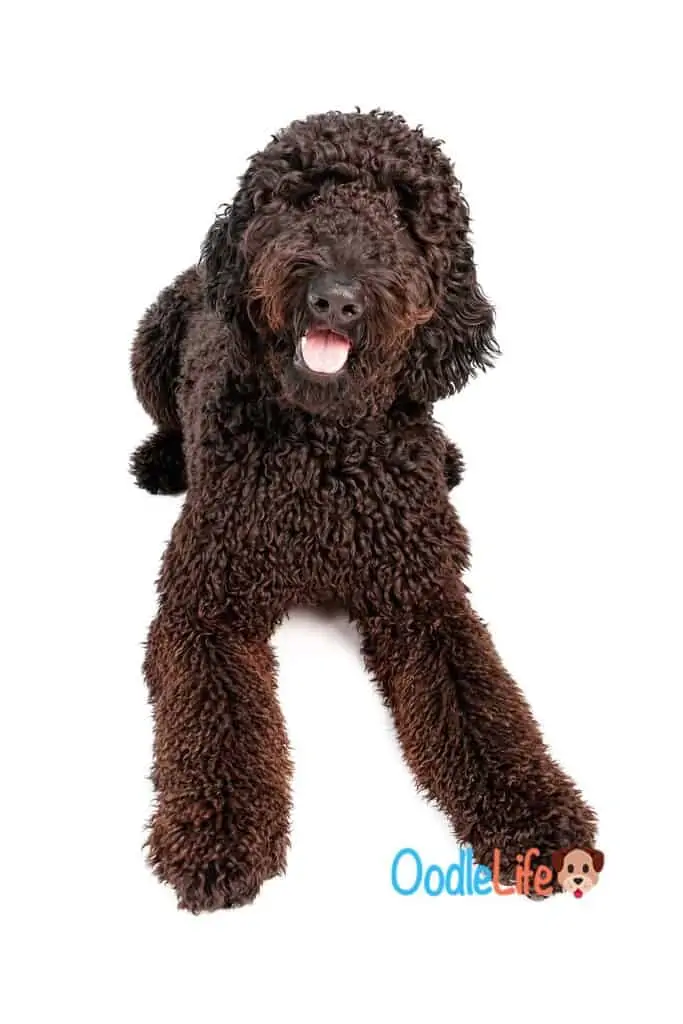
Because F1B dogs have 75% Poodle Genes than 50% for an F1 Goldendoodle – they are much less likely to shed.
Choose an F1B Goldendoodle to have the least chance of shedding.
Should I get an F1 or F1B goldendoodle
Do you want a big or small dog? Do you need your dog to be a good watch-dog, or can it just lie in the shade and look adorable? Is shedding a deal-breaker?
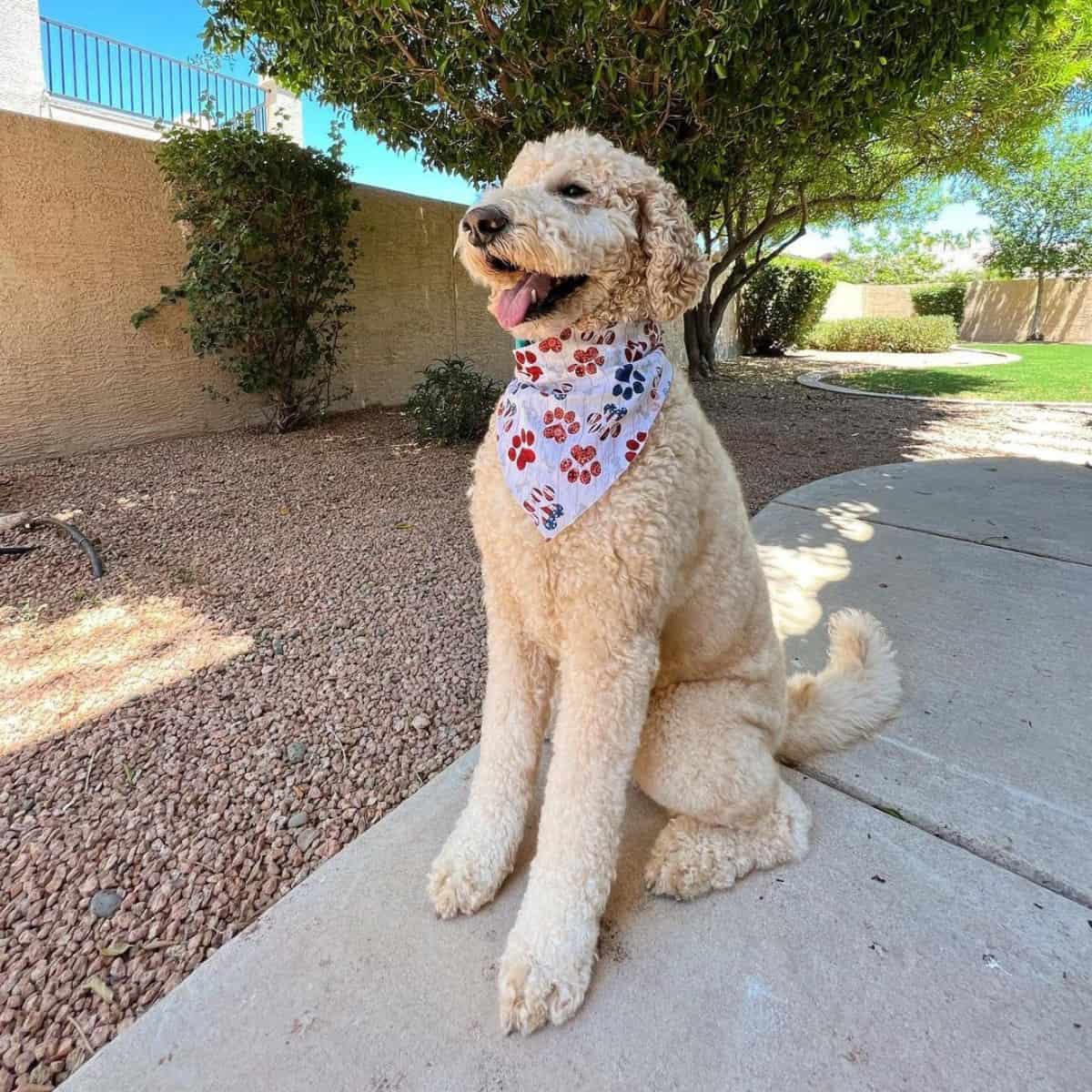
Some factors that may affect which type of Goldendoodle you choose include size, duration of shedding, and health issues.
F1 Goldendoodles can have ANY of the fantastic traits of the Poodle and the Golden Retriever. There are no guarantees which will be present, though. It is the first generation and a bit of a roll of the dice.
F1 Goldendoodles will typically be cheaper – just be prepared for the unexpected.
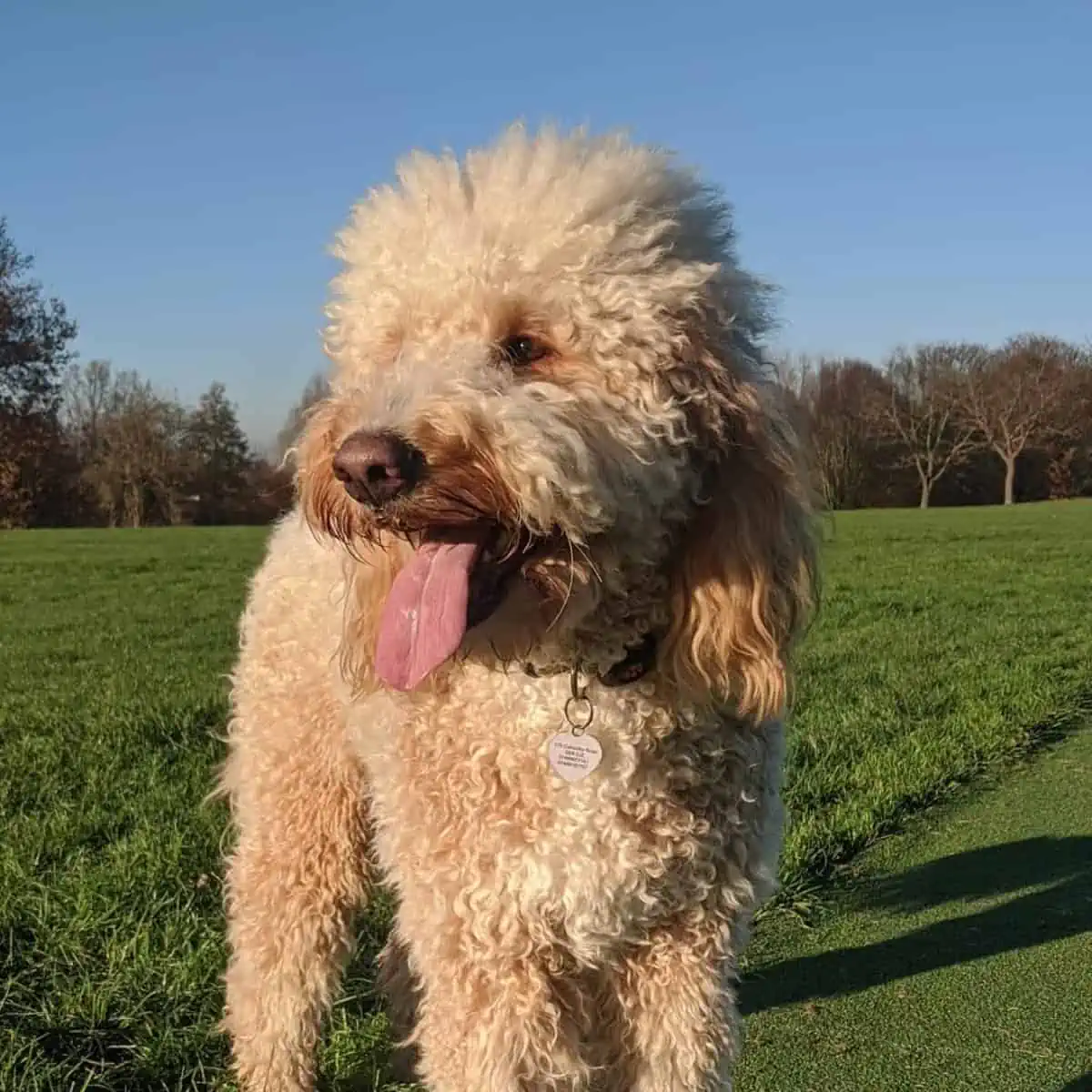
F1B Goldendoodles can also have any of the parent breeds’ temperament – but will more likely resemble a Poodle. This means non-shedding and wavy coats are more likely. So if non-shedding is a deal-breaker for you – choose an F1b.
So for asthma or allergy sufferers – pick an F1B Goldendoodle.
If you don’t like dog hair on clothes or constantly sweeping dog hair off the floor, pick an F1B Goldendoodle.
In terms of cost, expect to pay more for an F1B Goldendoodle because of these non-shedding tendencies.
How big will a F1b Goldendoodle get?
The generation of the Goldendoodle is not a primary factor in how large a Goldendoodle will get.
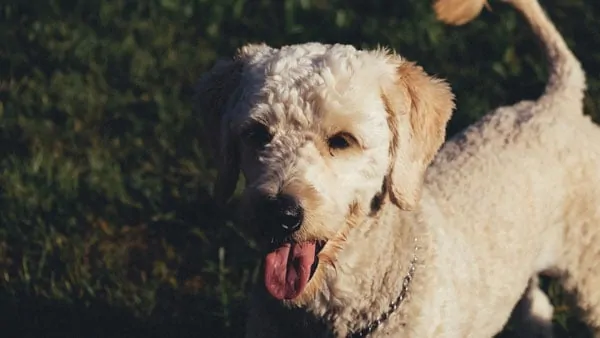
In terms of Goldendoodle size – the two most significant factors are… the parents! A dog will mimic the size of the parents. Simple average the distance between the two parents’ sizes, and most of the time, this will set your expectations straight.
Of course, an F1B Goldendoodle that is a backcross with a Toy or Miniature Poodle will be smaller – so F1B Goldendoodle is often the smaller Goldendoodles. In fact, Toy Goldendoodle and Teacup Goldendoodles are rarely F1 – as more Toy Poodle genetics are needed to limit the size.
The same, of course, operates in reverse – a standard Poodle crossed with a GR will result in a large Goldendoodle. The immediate size of each parent dog will be the most significant influencing factor. You are unlikely to get wild throwback sizes that differ much, even in a multigenerational doodle.
The stockier English Goldendoodle will produce heavier Groodle puppies than American Goldendoodles.
What does a F1 vs F1b Goldendoodle look like?
As dog owners – many of us groom and deeply care about our dog’s appearance. In terms of appearance, an F1 and F1b generation Goldendoodle can vary wildly. It is not the generation that makes them look different. It is the coat type.
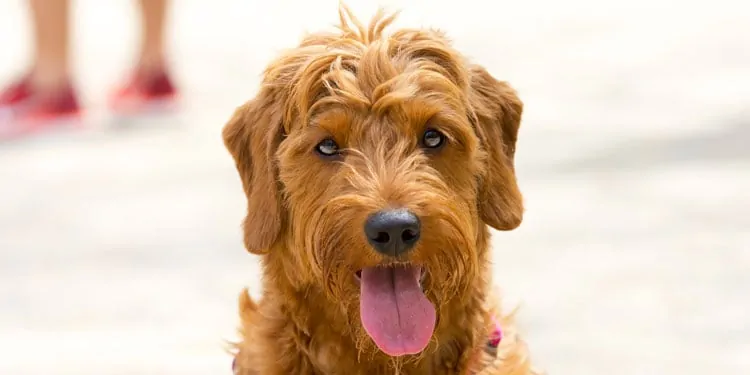
- Straight coat Goldendoodles – look like Golden retrievers and have to shed hair (sometimes called a flat coat)
- Wavy coat Goldendoodles – the class teddy bear look – and typically non-shedding
- Curly coat Goldendoodles – the most purebred Poodle-like and lowest shedding. Can be dense kinky curls or loose barrel curls
The coat color of any Goldendoodle generation also can present in any of the coat shades—Black, chocolate, white, golden, red, apricot, merle, gray.
The darkness and variety come from the Poodle – so expect more rare black Goldendoodles and apricot Goldendoodles to be F1b generation.
So if you are looking for a teddy-bear dog, look to a wavy-haired F1b Goldendoodle or an F2 Goldendoodle (multigenerational Goldendoodle). (Remember that F1 and F1b Cockapoo and Labradoodle dogs also have a distinct teddy bear appearance and should be considered).